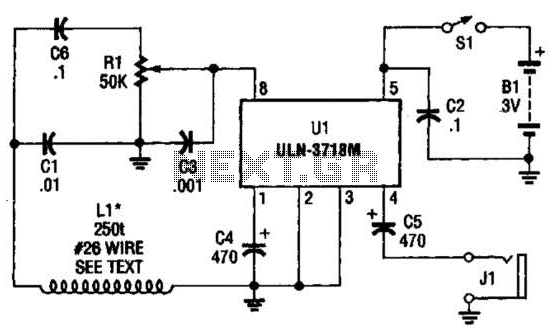

Second order errors were removed from the GNSS measurements in the Three-dimensional fields of electron density are available, the first and Results then have been applied to the GNSS corrections calculation. Of the ionospheric electron density in the altitude range from 80 to 20 00 Satellite measurements etc) the model has shown high accuracy in estimation Versus the independent observations (ionosondes, incoherent scatter radars,
VLF RECEIVER SENSITIVITY SERIES
During a long series of the model results validation Total electron content measurements, obtained from the variety of the The dataĪssimilation system updates the first-principle model results with the GNSS Three-dimensional data assimilation model of the ionosphere has beenĭeveloped by our team for the scientific research purposes. These facts together make theĬalculation of the ionospheric corrections for the GNSS measurements aĬhallenging and actual problem, which is still to be solved. Thermosphere components and solar activity).

Which is strongly forced by the external factors (such as neutral The ionosphere itself is a complex unstable medium, The amount of the signalĭelay is dependent on the current ionosphere state in the vicinity of the Receivers suffer from the ionospheric signal delay. Ionospheric corrections for the navigation measurements is of great Solomentsev, Dmitry 1 Khattatov, B 2 Titov, A 1 Cherniak, J 1 Belokrylov, A 3 Sorokin, S 2Īerological Observatory 2 National Research University of Information Technologies 3 Industrial Geodetic

Ionospheric corrections provided by the 3D data assimilation ionosphere model The numbering of the posters can differ from the numbering in the overview without abstracts. Monday November 17, 15:30-16:00, area in front of auditorium Rogier Tuesday November 18, 09:00 - 10:50, auditorium Rogier Monday November 17, 16:00 - 18:00, auditorium Rogier Stimulate discussion and encourage new collaborative work. TEC prediction models and operational tools, as well as any other related topics. Precise Point Positioning) to mitigate ionospheric threats affecting legacy and new GNSS signals, scintillation and Interference resilient receiver tracking models and implementations, real time positioning algorithms (e.g. The session welcomes work in the areas of ionospheric tomography and imaging, radio occultation, scintillation and Results of this project are expected to be showcased in this session, as well as any other initiatives in this area. That could contribute to a service to assist European users in countering GNSS vulnerability to ionospheric phenomena. Has focused on the understanding and development of new models that can be tested for their usefulness inĪddressing radio system specification with a view to support the development of concepts and operational tools The TRANSMIT project, an FP7 funded Marie Curie Initial Training Network, In this context this session addresses models and solutions to mitigate ionospheric threats to GNSSĪnd related applications. In support of a growing number of activities now embedded in modern society, are especially vulnerable to signal propagation Global Navigation Satellites Systems (GNSS), which have become essential Of interest to radio system users whose signals are affected by ionospheric propagation, in particular navigation andĬommunications systems operating below 3 GHz. New models and data to realise the state of the Earth's ionosphere are Magnetic fields, and neutral atmosphere dynamics. The Earth's ionosphere is a complex system that is driven by many different factors such as solar radiation, electric and Session - Modelling the Earth's ionosphere and solutions to counter ionospheric threats to GNSS applications Marcio Aquino, Alan Dodson (Monday) and Giorgiana De Franceschi, Vincenzo Romano (Tuesday)


 0 kommentar(er)
0 kommentar(er)
